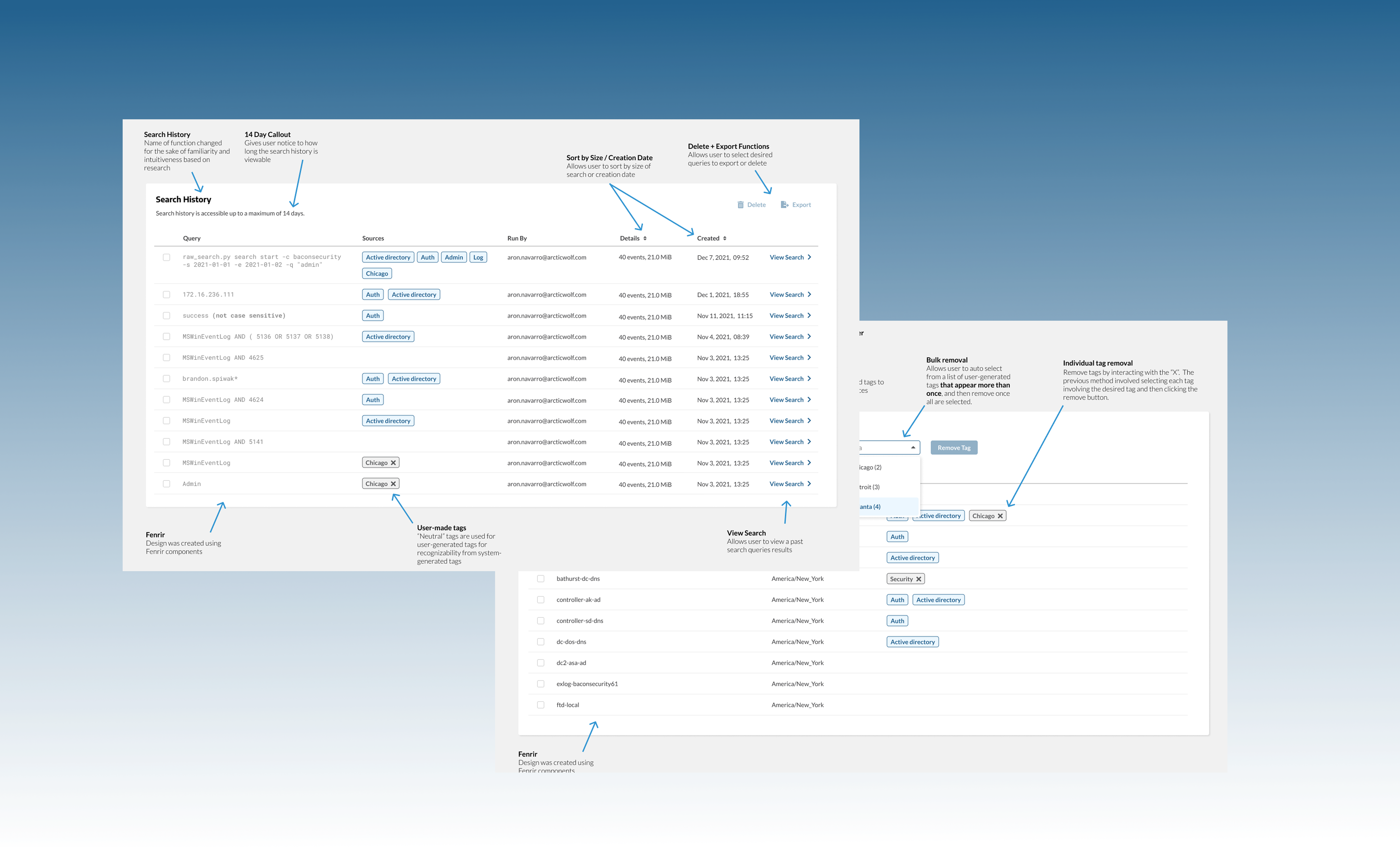Design is, in one sense, a promise. You are promising to solve a problem your users are experiencing. Like all promises, you should honour this promise. You must be honest and clear about the ability and limitations of your design.
This project focused on improving Arctic Wolf's Raw Log Search functionality as it migrated to the Unified Portal, addressing key usability issues identified through research. Good design serves an ethical purpose and does so in efficient and effective ways.
The Problem
Users often don't understand how to perform fast searches because they don't know what the purpose of each feature serves. The search ribbon is congested, with unclear flow of inputs making it intimidating to start a search.
Additionally, things don't go as planned — everything is not kept track of clearly in one place, taking away from a cohesive experience. Many Arctic Wolf users don't realize the purpose and benefit of raw log search, thus they don't use it.
The challenge was to create a less disjointed experience when using Raw Log Search as we migrated into the Unified Portal.
The Solution
The solution focused on redesigning the Raw Log Search interface to make it more intuitive, provide better guidance, and ensure a cohesive experience with the Unified Portal.
We implemented clear descriptions for features, improved the information architecture, and added contextual help to guide users through the search process, addressing the core problems identified during research.
The Research
Through user interviews and analysis of the existing interface, we identified several key issues:
- Lack of context: No helpful text to understand what each input requires
- Lack of guidance: Users were unclear what they should be doing or whether the feature had any use
- Design inconsistency: The table design wasn't aligned with Arctic Wolf's Fenrir design system
- Cluttered search: The congested search ribbon made inputs unclear and intimidating
- Unclear purpose: Users didn't understand the purpose of tags and log sources
Our research process included questions like "Why is this feature useful?", "What is the current benefit to users?", and "What do users hope to achieve when they use raw log search?"
Design Goals
Based on our research, we established three primary design goals:
- Make it intuitive to perform efficient searches in response to research supporting the confusion of using it
- Help users understand the use of Raw Log Search in response to misunderstandings of its purpose
- Fill in gaps of knowledge in interacting with secondary use cases in response to 70% of users not knowing they exist
Each design decision was made with these goals in mind, ensuring that the final product would effectively address the identified problems while providing a seamless user experience.
Design Decisions
Our design decisions included:
- Adding clear labels and descriptions to explain feature purposes
- Restructuring the search interface to create a more logical flow
- Incorporating help documentation accessible from within the interface
- Creating a more consistent design aligned with Arctic Wolf's design system
- Adding contextual guidance for features like filters, tags, and log sources
- Implementing clearer sorting and organization options
These decisions were directly informed by our research findings and user needs, with a focus on creating an intuitive and efficient experience.
Design Solution
The final design featured:
- Clearly labeled search history section with explanations of its purpose
- Better organized data table with improved sorting and filtering capabilities
- Contextual tooltips explaining the purpose of features and how to use them
- User-made tags with clear visual indicators and easy management controls
- Improved filter system with clear descriptions and live filtering capability
- Help documentation integrated throughout the interface
- Improved log sources section with clear explanation of its purpose and functionality
These improvements directly addressed the pain points identified in our research, creating a more usable and valuable Raw Log Search experience.
Reflections
The redesign process demonstrated the importance of understanding user needs and providing clear guidance in complex interfaces. Key learnings included:
- Complex technical features require clear contextual guidance to be fully utilized
- User research revealed significant gaps between intended and actual feature usage
- Iterative feedback from stakeholders helped refine solutions to better meet both user and business needs
- Design consistency within a larger system (the Unified Portal) was crucial for user adoption
- Clear labeling and tooltips significantly improved user understanding of feature purposes
By addressing the identified pain points, we created a more intuitive Raw Log Search experience that fits cohesively within the Unified Portal, driving better feature adoption and user satisfaction.
